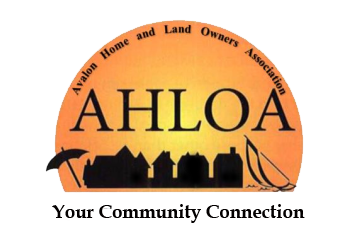At the November 8 meeting, the Avalon Planning and Zoning Board heard two applications for variances:
The first Applicant was seeking side and rear yard setback variances for a storage area that he wanted to construct above his garage. The original home on the property, which has undergone considerable restoration, is said to have been a Sears Craftsman House. The owner testified that the original garage on the property was a two-story building that had been destroyed in the 1960 storm. His father rebuilt the garage without a second floor on the same location. The Applicant wants to repair the garage and put a second story storage area over the garage. The second story would not have a kitchen or a bathroom. The plan is to provide the garage with the same architectural elements to harmonize with the look and feel of the house. A larger house already exists behind the garage. The distance between that house and the current garage rear wall is 4.67 feet. However, the house has a bump-out for a second floor fireplace which would be three feet from the garage second story. To reduce fire spread concerns, Applicant would use two-hour fire-rated material for the rear wall of the garage.
Members of the public, who pointed out that the aesthetic charm of the house would be enhanced by improvement of the garage, were strongly in favor of granting the variance. One person pointed out that the Borough’s Master Plan encourages preserving historical structures even if they are not on a historical register. The Board approved the variances.The second Applicant sought variances for a swimming pool. The property in question is a corner lot at 2118 First Avenue. The property owner claimed that the variances sought could be granted on the basis of hardship or on the basis that the benefits of granting the variance outweighs any detriments.
The key point of the hardship argument was that the property is a corner lot and as such has two front yards. Pools cannot be placed in front yards. Also, the corner lot has two site-line triangles which further limit the possible pool location. The Board, however, concluded that the Applicant did not show that the nature of the property gave rise to any undue hardship, and the Board denied granting a variance on the basis of hardship.
The key argument offered in favor of granting the variance on the basis of balancing benefits and detriments was that the pool would be located in an area that currently is impervious. Therefore, there would not be any increase in impervious coverage. Additionally, about 430 square feet of pavers would be replaced by grass, which would provide an 8.6% reduction in runoff pollution.
Again, the Board denied the variances on the grounds that the Applicant failed to show that the benefits of granting the variances outweighed the detriments.


